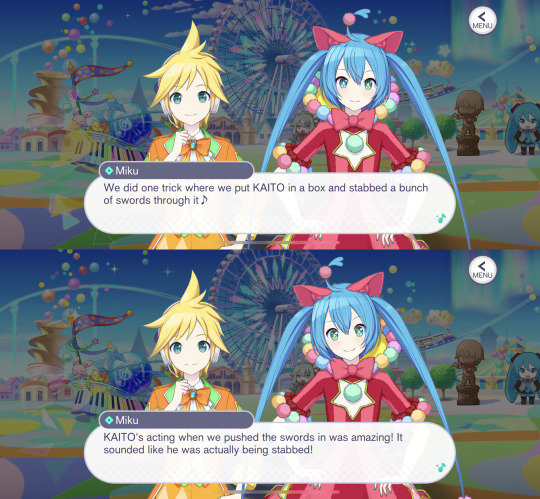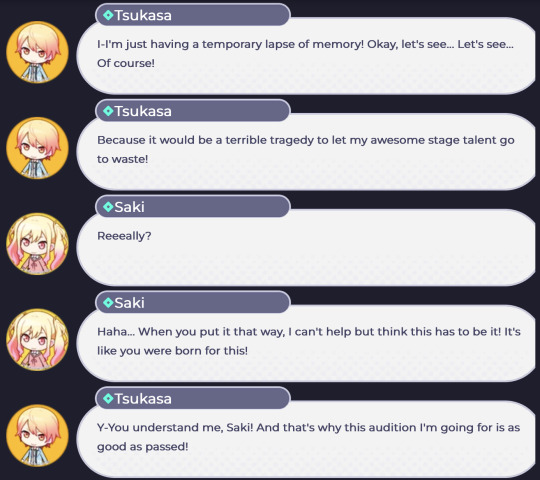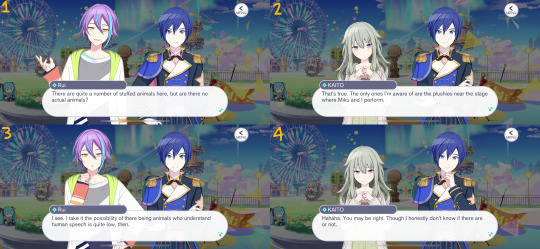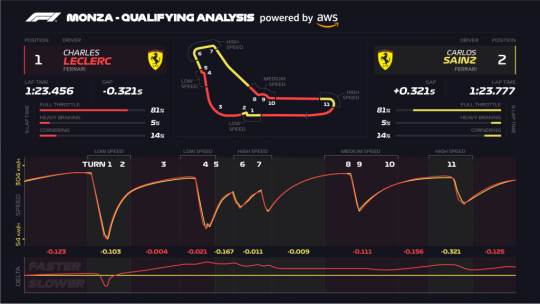#performance dashboard examples
Explore tagged Tumblr posts
Text
Evaluating the Impact of Performance Dashboards on Business ROI

In today’s fast-changing business world, achieving growth and success relies on using data effectively. But there’s a lot of data out there, and it can be hard to find the important stuff that helps us make smart decisions. That’s where performance dashboards come in – they’re like super helpful tools that cut through all the data noise and show us what really matters. They’re like guiding lights that make things clear when everything else seems confusing.
Whether you’re a CEO steering the company’s strategic course, a manager optimizing departmental workflows, or an analyst tracking campaign effectiveness, a performance dashboard empowers you to make informed decisions with confidence.
What Is a Performance Dashboard in Business?
A performance dashboard in business is a digital tool that displays important information about how a company is doing. It gathers data from different parts of the business and presents it in easy-to-understand charts and graphs. This helps business owners and managers see key details quickly, like sales numbers, customer satisfaction, website visits, and more – all in one place.
What makes these dashboards cool is that they’re not just static images. They’re interactive and can show real-time updates. So, if something changes, you can see it right away. It’s like having a special window that gives you insights into how your business is performing, helping you make better decisions.
Key Elements of a Performance Dashboard
Different types of dashboards have their own rules for what works best. So, when creating a performance dashboard for top-level people like executives, CEOs, and project managers, what things should you put in to help them easily keep track of how things are going?

Metrics and KPIs (Key Performance Indicators):
These are the core data points that reflect the health and progress of your business. They include metrics like sales, revenue, customer satisfaction scores, and other vital performance indicators specific to your industry and goals.
Data Visualization:
Visual representations such as charts, graphs, and gauges help translate complex data into easily understandable formats. These visuals allow users to quickly grasp trends, patterns, and anomalies.
Real-Time Updates:
Dynamic data updates ensure that the dashboard provides the most current insights. Real-time updates allow you to respond promptly to changes and make informed decisions.
Customization and Personalization:
Dashboards should cater to the unique needs of different users. Customization features allow users to choose the specific metrics they want to see and tailor the dashboard to their preferences.
Comparative Analysis:
This involves analyzing data over time or against benchmarks to identify trends, anomalies, and areas for improvement. Comparative analysis helps contextualize data and supports decision-making.
Interactivity and Drill-Down Capabilities:
Interactive features enable users to explore data further by drilling down into specific data points. This feature helps users uncover deeper insights and answers to specific questions.
Data Source Integration:
Dashboards aggregate data from various sources across the organization, providing a unified view. Integration ensures data accuracy and reduces the need for manual data gathering.
Mobile Responsiveness:
As work becomes more adaptable and mobile, it’s important that dashboards can be easily used on different mobile devices. This lets users stay updated even while they’re on the move.
Alerts and Notifications:
Dashboards can provide alerts or notifications based on predefined conditions or thresholds. This keeps users informed about significant changes or deviations in real time.
User-Friendly Interface:
The dashboard should have an intuitive and user-friendly design that requires minimal training for users to navigate and interpret the displayed information.
Benefits of Performance Dashboard Templates
Performance dashboard templates are pre-designed layouts that help you create informative data visualization tools quickly and easily. These templates provide a structured framework for presenting key metrics, making it simpler to track business performance and make informed decisions. Here are five benefits of using performance dashboard templates:
Time Efficiency: Templates save time by providing a pre-designed structure. You can focus on adding your specific data rather than building the dashboard from scratch.
Consistency: Templates ensure a consistent look and feel across dashboards, promoting a cohesive and professional appearance for all your performance tracking.
Ease of Use: Templates often come with intuitive designs and pre-configured elements, making it easier for users to input their data and create informative dashboards.
Best Practices: Many templates incorporate industry best practices for data visualization and layout, enhancing the effectiveness of your dashboard in conveying insights.
Customization: While templates offer a starting point, they can be tailored to your unique needs. You can customize colors, fonts, and other elements to align with your branding and preferences.
Business Performance Dashboard Examples
Sales Performance Dashboard:
This dashboard could include metrics like total revenue, sales growth, top-selling products, customer acquisition rates, and conversion rates. Visualizations could include line charts showing revenue trends, bar graphs displaying product performance, and a map indicating the geographical distribution of customers.

Marketing Campaign Dashboard:
This dashboard might feature metrics such as website traffic, click-through rates, social media engagement, and lead generation. Visualizations could include pie charts showing traffic sources, line charts for tracking campaign performance over time, and bar graphs illustrating social media engagement metrics.

Financial Performance Dashboard:
For this dashboard, you could incorporate metrics like profit margins, cash flow, expenses breakdown, and return on investment (ROI). Visualizations could include a stacked bar chart for expense distribution, a line chart for cash flow trends, and a doughnut chart to highlight profit distribution.

Employee Performance Dashboard:
This dashboard could display metrics such as employee turnover rates, productivity metrics, training completion rates, and engagement scores. Visualizations might include line charts showing turnover trends, bar graphs illustrating productivity metrics, and a gauge indicating employee satisfaction levels.
Supply Chain Dashboard:
This dashboard might include metrics like inventory levels, supplier performance, lead times, and order fulfillment rates. Visualizations could include a heat map showing inventory levels, line charts tracking supplier performance, and a bar graph indicating order fulfillment rates.

Customer Satisfaction Dashboard:
For this dashboard, you could include metrics like Net Promoter Score (NPS), customer feedback sentiment analysis, and customer support response times. Visualizations could include a radial gauge for NPS, a sentiment analysis word cloud, and a bar graph showcasing response time averages.
Healthcare Performance Dashboard:
This dashboard could include metrics like patient satisfaction scores, appointment wait times, patient outcomes, and healthcare provider performance. Visualizations might include a bar chart for patient satisfaction scores, line charts tracking wait times, and a scatter plot for provider performance based on various criteria.

Manufacturing Efficiency Dashboard:
For this dashboard, you could incorporate metrics like production output, defect rates, equipment downtime, and operational efficiency. Visualizations might include a line chart for production trends, a heatmap for defect occurrence, and a bar graph showing equipment downtime by category.

Conclusion
Performance dashboards are like special maps for businesses. They show important information in easy-to-understand pictures, helping big bosses and managers know how well things are going. These dashboards can change and update in real time, making them super helpful for making quick decisions. So, just like a map guides travelers, performance dashboards guide businesses toward success by showing the right paths to take.
#performance dashboard in business intelligence#performance dashboard template#performance dashboard#kpi dashboard examples#what is a performance dashboard
0 notes
Text
Friday, October 13th, 2023
🌟 New
We’ve been experimenting a lot lately with the For You feed on the dashboard, and one thing that’s rolled out to everyone is that it now contains a mix of content from people you follow and people you don’t. This is an intentional change, and the mix should be around 50/50 for now. We’re still tuning it though, so please send feedback if you have thoughts about it!
We’re also now experimenting with a way for secondary blogs to write replies on posts. For some users who have more than one blog, the avatar icon next to the reply input is tappable/clickable, to select which blog is writing the reply.
When searching for content on a blog, if you use a hashtag (#) as the first character, we’ll show results tagged with that tag instead of performing a general text search. For example, searching for “#splatoon” on a blog will limit results to those posts tagged with #splatoon. Searching for “splatoon” performs a more general search.
The Tumblr Supporter badge is now available to everyone!!! Check it out in TumblrMart.
Folks using the beta version of the Tumblr app on Android will see a new design for the Activity/Messaging tab. Let us know what you think!
We have expanded the list of AI bots/crawlers we’re discouraging from using Tumblr data.
🛠 Fixed
Please update the iOS app to the latest version, 31.6, to receive the fixes for Tuesday’s two ongoing issues.
We’ve recently fixed some more bugs that have been preventing SoundCloud embeds from working properly.
🚧 Ongoing
We’re working to fix an issue in the iOS app that’s been causing the messaging/activity nav bar item to not be updated properly with a count of how many unread activity items you have. Sometimes it gets stuck and loses count, even though you’re receiving activity.
🌱 Upcoming
We’re working on setting up some logic to limit push notifications when a post of yours blows up, and we’re interested in getting volunteers to help figure out what the best thresholds are. If you want to help, reach out in the replies!
Experiencing an issue? File a Support Request and we’ll get back to you as soon as we can!
Want to share your feedback about something? Check out our Work in Progress blog and start a discussion with the community.
Wanna support Tumblr directly with some money? Check out the new Supporter badge in TumblrMart!
646 notes
·
View notes
Text
Hi... long time no NnT-Analysis.
I want to talk about Lancelot and Tristan's dynamic. I'll be putting it under a read-more so I don't spam your dashboard.

First, let's take a look at their designs.
Tristan's Signature Color: Blue-ish Teal
Lancelot's Signature Color: Pink-ish Red
According to color theory, these two colors complement one another. Nakaba utilizes complementary colors quite often in his designs. You'll notice this in many of the most important pairs. It's a visual way to emphasize the connection between two people.
The use of complementary colors goes as far as Lancelot's Sin disguise. When he takes that form, he wears a teal collar... Just like how Tristan wears a collar with Lancelot's red.
Both of them also got their hair colors from their mother, while the style is more similar to their fathers. They have what has been described as a "feminine" appearance. Lancelot is incredibly bothered by this, to the extent he tries really hard to present as masculine. Tristan on the other hand doesn't seem to be bothered by it himself.
Their first volume covers also mirror one another.

Their namesakes are pulled from Arthurian mythos. In some of the original stories, Lancelot and Tristan do act similarly as friends who are "two sides of the same coin" in a way. Fated companions who counter one another.
Going into actual plot stuff now. The way their stories are intertwined, the particular tropes their relationship embodies, and why it's important.
The growth of both of their characters is often explored through their connection. For example, Lancelot first learned to read hearts while dueling Tristan.

Ban references the moment Lancelot received his scar here. Tristan was so excited while dueling his friend, that he lost control of himself. The heightened emotions awakened the dark magic in him that he inherited from his father. Tristan blacked out, striking Lancelot.
This was a significant moment for both of them. Tristan and Lancelot both experienced an "awakening" here, which set them down their respective paths and cemented their bond.




Lancelot is quite literally marked by him. With this scar, there will always be apart of him that is irreversible tied to his relationship with Tristan.
Additionally, the fact Tristan had hurt and permanently scarred Lancelot is what triggered Tristan's anxiety about fighting. It affected him so deeply that he began to fear combat, instead wanting to pursue a path of healing. So that it would never happen again.



The bulk of this film takes place when they're both 14. Which is a few years after Lancelot initially went missing. He felt the need to hide his identity, but even in his disguise, he wanted to somehow push Tristan to his peak performance.
This illustrates how Lancelot never once viewed him as a threat. Tristan isn't a monster to him... He wants to see him exercise the strength that Tristan is so terrified of.
(I wish this site had CC, but Lancelot wolf-whistles at him before this line...)

Lancelot knows Tristan well enough to be aware that these fears would hold him back in combat. He takes action when they fight together, pushing and prodding him until he is forced to conquer that fear and act.
Tristan's hesitancy comes from his care for Lancelot. He's terrified at the thought of ever hurting him-- or anyone-- again. Lancelot sees this differently. He views Tristan's attitude as if he's viewing Lancelot as someone weak who needs protection. He has faith in Tristan's strength and never doubts him. But that faith only makes things more complicated when Tristan avoids facing him. Lancelot knows he's capable and he wants to be his equal in that regard.





Earlier, I referenced Ban's comment in the one-shot where he wonders if Lancelot's behavior at that time had to do with this duel. There's an implication that part of why Lancelot felt so restless and inadequate had to do with Tristan's rejection. This was worsened by the fact that Lancelot had learned to read hearts, so he could see what Tristan must've been thinking in that moment. Tristan's concern doesn't come from viewing Lancelot as weak, but that's how Lancelot interpreted his heart and his words.
Between that and being babied by his parents, he lashed out and ran away to "prove himself." Which is how he went missing to begin with.
He didn't want to stop like Tristan did. He wanted to keep going. Tristan's strength motivated him, but Tristan didn't return those feelings because of his own self-loathing.
In the end, Lancelot is the one who convinces Tristan to embrace his power. He vowed to be there to stop Tristan in case things ever go too far.




Lancelot reads Tristan's heart in this moment and smiles to himself.


Lancelot's love for his friend manifests through his desire to propel Tristan to his peak potential. Through Lancelot's affection, Tristan changes forever. His pure faith in Lancelot and his intentions was all he needed to conquer his fears. To him, he doesn't need to be worried about losing himself, because he has Lancelot.
Many years pass since this moment, but Tristan still views Lancelot as that anchor he needs by his side. Tristan's control over his power has grown significantly, but he still fears using it without Lancelot by his side.


Something interesting about their dynamic in the present day is the way the dynamic has flipped. While Tristan respects Lancelot's power, now he is the one feeling weak in comparison. This is also a testament to the strength of their bond. While Tristan feels they're no longer "equal", it doesn't drive a wedge in their relationship. He isn't resentful or jealous, it doesn't push him away from Lancelot. Their bond is too strong for that.
Not to mention, what seems to bother him more than anything else is the fact that Lancelot won't discuss how he gained this new power. He's bothered by the way his friend vanished without a word for so long, and now refuses to talk about what happened.

Regardless, this just means that Tristan trusts Lancelot's abilities without question. The moment he arrives, Tristan believes so strongly in his ability to win above anyone else. If anyone can defeat the King of Camelot, it will be his closest companion.

Circling back to Lancelot being his anchor: This is pretty common in fantasy Shounen. Leading characters who possess dark magic often have a partner who they rely on to bring them back down, or stop them from going too far and losing themself. However, you usually see it between the leading male main character and the female secondary protagonist... In fact, this is the exact dynamic Meliodas and Elizabeth had with each other in the original manga.
This dynamic came up frequently whenever Meliodas went full-demon mode. But this page from the Holy War arc in particular really reminds me of Lancelot's line where he says he'll "beat Tristan into the dirt if he has to."

Considering these two are Tristan's parents, you'd think the parallel with Tristan would be between him and Isolde, or something. But it's not. It's with Lancelot.
Their chemistry is so natural. They spend some time apart, but nothing really changes. The play off of each other so easily and understand each other so deeply.

Lancelot teases him for a lot of things. Being air-headed, being childish around his parents, etc. But it isn't mean-spirited, and Tristan knows that. It's just an aspect of their relationship and one of the ways Lancelot shows affection to people. That's Tristan's best friend who is mean to him, but he still calls him by a cute little nickname ("Lance.")

The implications that Tristan has called Lancelot out for being like his father before is really funny. Quick lines like this convey a lot about a relationship, it demonstrates that familiarity.

I have a lot more I could say about them, but Tumblr apparently has a 30 image limit per-post. I'm just really excited to see what comes next for them in the timeskip. I suspect all of these building themes are going to come together in some pretty important ways the closer that we get to the main conflict of the sequel.
This analysis isn't necessarily meant to be shippy... But I do ship them, lol... ❤️
191 notes
·
View notes
Text
The reverse-centaur apocalypse is upon us

I'm coming to DEFCON! On Aug 9, I'm emceeing the EFF POKER TOURNAMENT (noon at the Horseshoe Poker Room), and appearing on the BRICKED AND ABANDONED panel (5PM, LVCC - L1 - HW1–11–01). On Aug 10, I'm giving a keynote called "DISENSHITTIFY OR DIE! How hackers can seize the means of computation and build a new, good internet that is hardened against our asshole bosses' insatiable horniness for enshittification" (noon, LVCC - L1 - HW1–11–01).

In thinking about the relationship between tech and labor, one of the most useful conceptual frameworks is "centaurs" vs "reverse-centaurs":
https://pluralistic.net/2022/04/17/revenge-of-the-chickenized-reverse-centaurs/
A centaur is someone whose work is supercharged by automation: you are a human head atop the tireless body of a machine that lets you get more done than you could ever do on your own.
A reverse-centaur is someone who is harnessed to the machine, reduced to a mere peripheral for a cruelly tireless robotic overlord that directs you to do the work that it can't, at a robotic pace, until your body and mind are smashed.
Bosses love being centaurs. While workplace monitoring is as old as Taylorism – the "scientific management" of the previous century that saw labcoated frauds dictating the fine movements of working people in a kabuki of "efficiency" – the lockdowns saw an explosion of bossware, the digital tools that let bosses monitor employees to a degree and at a scale that far outstrips the capacity of any unassisted human being.
Armed with bossware, your boss becomes a centaur, able to monitor you down to your keystrokes, the movements of your eyes, even the ambient sound around you. It was this technology that transformed "work from home" into "live at work." But bossware doesn't just let your boss spy on you – it lets your boss control you. \
It turns you into a reverse-centaur.
"Data At Work" is a research project from Cracked Labs that dives deep into the use of surveillance and control technology in a variety of workplaces – including workers' own cars and homes:
https://crackedlabs.org/en/data-work
It consists of a series of papers that take deep dives into different vendors' bossware products, exploring how they are advertised, how they are used, and (crucially) how they make workers feel. There are also sections on how these interact with EU labor laws (the project is underwritten by the Austrian Arbeiterkammer), with the occasional aside about how weak US labor laws are.
The latest report in the series comes from Wolfie Christl, digging into Microsoft's "Dynamics 365," a suite of mobile apps designed to exert control over "field workers" – repair technicians, security guards, cleaners, and home help for ill, elderly and disabled people:
https://crackedlabs.org/dl/CrackedLabs_Christl_MobileWork.pdf
It's…not good. Microsoft advises its customers to use its products to track workers' location every "60 to 300 seconds." Workers are given tasks broken down into subtasks, each with its own expected time to completion. Workers are expected to use the app every time they arrive at a site, begin or complete a task or subtask, or start or end a break.
For bosses, all of this turns into a dashboard that shows how each worker is performing from instant to instant, whether they are meeting time targets, and whether they are spending more time on a task than the client's billing rate will pay for. Each work order has a clock showing elapsed seconds since it was issued.
For workers, the system generates new schedules with new work orders all day long, refreshing your work schedule as frequently as twice per hour. Bosses can flag workers as available for jobs that fall outside their territories and/or working hours, and the system will assign workers to jobs that require them to work in their off hours and travel long distances to do so.
Each task and subtask has a target time based on "AI" predictions. These are classic examples of Goodhart's Law: "any metric eventually becomes a target." The average time that workers take becomes the maximum time that a worker is allowed to take. Some jobs are easy, and can be completed in less time than assigned. When this happens, the average time to do a job shrinks, and the time allotted for normal (or difficult) jobs contracts.
Bosses get stack-ranks of workers showing which workers closed the most tickets, worked the fastest, spent the least time idle between jobs, and, of course, whether the client gave them five stars. Workers know it, creating an impossible bind: to do the job well, in a friendly fashion, the worker has to take time to talk with the client, understand their needs, and do the job. Anything less will generate unfavorable reports from clients. But doing this will blow through time quotas, which produces bad reports from the bossware. Heads you lose, tails the boss wins.
Predictably, Microsoft has shoveled "AI" into every corner of this product. Bosses don't just get charts showing them which workers are "underperforming" – they also get summaries of all the narrative aspects of the workers' reports (e.g. "My client was in severe pain so I took extra time to make her comfortable before leaving"), filled with the usual hallucinations and other botshit.
No boss could exert this kind of fine-grained, soul-destroying control over any workforce, much less a workforce that is out in the field all day, without Microsoft's automation tools. Armed with Dynamics 365, a boss becomes a true centaur, capable of superhuman feats of labor abuse.
And when workers are subjected to Dynamics 365, they become true reverse-centaurs, driven by "digital whips" to work at a pace that outstrips the long-term capacity of their minds and bodies to bear it. The enthnographic parts of the report veer between chilling and heartbreaking.
Microsoft strenuously objects to this characterization, insisting that their tool (which they advise bosses to use to check on workers' location every 60-300 seconds) is not a "surveillance" tool, it's a "coordination" tool. They say that all the AI in the tool is "Responsible AI," which is doubtless a great comfort to workers.
In Microsoft's (mild) defense, they are not unique. Other reports in the series show how retail workers and hotel housekeepers are subjected to "despot on demand" services provided by Oracle:
https://crackedlabs.org/en/data-work/publications/retail-hospitality
Call centers, are even worse. After all, most of this stuff started with call centers:
https://crackedlabs.org/en/data-work/publications/callcenter
I've written about Arise, a predatory "work from home" company that targets Black women to pay the company to work for it (they also have to pay if they quit!). Of course, they can be fired at will:
https://pluralistic.net/2021/07/29/impunity-corrodes/#arise-ye-prisoners
There's also a report about Celonis, a giant German company no one has ever heard of, which gathers a truly nightmarish quantity of information about white-collar workers' activities, subjecting them to AI phrenology to judge their "emotional quality" as well as other metrics:
https://crackedlabs.org/en/data-work/publications/processmining-algomanage
As Celonis shows, this stuff is coming for all of us. I've dubbed this process "the shitty technology adoption curve": the terrible things we do to prisoners, asylum seekers and people in mental institutions today gets repackaged tomorrow for students, parolees, Uber drivers and blue-collar workers. Then it works its way up the privilege gradient, until we're all being turned into reverse-centaurs under the "digital whip" of a centaur boss:
https://pluralistic.net/2020/11/25/the-peoples-amazon/#clippys-revenge
In mediating between asshole bosses and the workers they destroy, these bossware technologies do more than automate: they also insulate. Thanks to bossware, your boss doesn't have to look you in the eye (or come within range of your fists) to check in on you every 60 seconds and tell you that you've taken 11 seconds too long on a task. I recently learned a useful term for this: an "accountability sink," as described by Dan Davies in his new book, The Unaccountability Machine, which is high on my (very long) list of books to read:
https://profilebooks.com/work/the-unaccountability-machine/

Support me this summer on the Clarion Write-A-Thon and help raise money for the Clarion Science Fiction and Fantasy Writers' Workshop!

If you'd like an essay-formatted version of this post to read or share, here's a link to it on pluralistic.net, my surveillance-free, ad-free, tracker-free blog:
https://pluralistic.net/2024/08/02/despotism-on-demand/#virtual-whips

Image: Cryteria (modified) https://commons.wikimedia.org/wiki/File:HAL9000.svg
CC BY 3.0 https://creativecommons.org/licenses/by/3.0/deed.en
#pluralistic#bossware#surveillance#microsoft#gig work#reverse centaurs#labor#Wolfie Christl#cracked labs#data at work#AlgorithmWatch#Arbeiterkammer#austria#call centers#retail#dystopianism#torment nexus#shitty technology adoption curve
94 notes
·
View notes
Text

1974 Chevrolet Laguna S-3
The **1974 Chevrolet Laguna S-3** was a distinctive American muscle car from the early 1970s, part of Chevrolet's Laguna series. It was designed to blend sporty performance with a bit of luxury and comfort, catering to drivers who wanted both style and substance.
**Design and Styling:**
The 1974 Laguna S-3 had a bold and unique look with a sleek, low-profile body. It featured a distinctive front end with a wide, angular grille and square headlights, giving it a muscular, aggressive stance. The car had a fastback roofline, which added to its sporty appearance, and often came with decorative side stripes and special "S-3" badging to set it apart from other models.
**Performance:**
Under the hood, the 1974 Laguna S-3 came with a variety of engine options. The standard engine was a 350-cubic-inch (5.7-liter) V8, which produced around 145 horsepower due to emissions regulations of the era. For more power, there was an optional 400-cubic-inch (6.6-liter) V8 engine that produced around 155 horsepower. Both engines were mated to a three-speed automatic transmission, though a manual transmission was also available.
**Features:**
Inside, the Laguna S-3 offered a blend of sporty and luxurious features. The cabin was designed for comfort, with bucket seats, a sporty steering wheel, and a simple, functional dashboard layout. It came equipped with options like air conditioning, power steering, and an AM/FM radio. The interior was spacious, with comfortable seating for up to four people and a decent-sized trunk for luggage or gear.
**Legacy:**
The 1974 Chevrolet Laguna S-3 was part of a time when American car manufacturers were dealing with changing regulations and fuel economy concerns. Despite these challenges, the Laguna S-3 remained a popular choice for those who wanted a combination of performance and style. It is remembered today as a classic example of the muscle car era transitioning into the more regulated 1970s automotive landscape.
Overall, the **1974 Chevrolet Laguna S-3** was a stylish and sporty vehicle that offered a good mix of performance, comfort, and unique design features during a transformative period for American cars.
61 notes
·
View notes
Note
Pspsppspspspsp…,. Any weird facts on how sekai works? Specifically wondershow if you can, but from what I know is that in general sekai will kick you out forcibly if your phone dies, school sekai has no daylight cycle, wondershow has a Victorian ages style library, empty sekai is so big you can get lost in it, and street sekai has a city
Okay I'm going 100% Wonderland SEKAI on this because I can and I have some stuff scheduled already about general SEKAI lore. And because holy shit Wonderland SEKAI is interesting.
Without further ado, 8 facts about Wonderland SEKAI...
Under the cut due to length
This doesn't display well on the desktop dashboard I apologise for that.
Wonderland SEKAI fact #1: KAITO might have been stabbed.



This is all the same magic show, just three different references to it (and a minor inconsistency that Tsukasa gets told about it twice). These are from an area conversation, Miku's Wonderland SEKAI 2* story 1, and KAITO's Wonderland SEKAI 2* story 1. Either KAITO really is that flexible or Virtual Singers cannot die. This probably applies to all SEKAI not just Wonderland but I just wanted everyone to know about KAITO getting stabbed.
Wonderland SEKAI fact #2: Miku seems to be younger than the members of WonderlandsxShowtime.

In an area conversation, KAITO says he thinks Emu would be the oldest if she and Miku were sisters. However, in this conversation he seems to be mainly referring to personality, so there is a possibility that Miku is still her standard age of 16 and just acts younger than she is. That said, the ages of Virtual Singers do vary through other SEKAI (particularly School), which adds a bit more evidence for this fact.
Wonderland SEKAI fact #3: Plants are sentient.



They're alive. They talk. They sing. They have conscious thought. Alice in Wonderland type shit. (Sources: KAITO's Troupe Positions Open 3* card stories, @/pjsekai_eng's translation of 4koma #72)
Wonderland SEKAI fact #4: Wonderland SEKAI is the only SEKAI with distinguishable inhabitants (not counting Virtual Singers)

While the Stage SEKAI has audiences that come and go, we don't know much about them and they don't seem to have any defined personalities or characteristics (it may be an instance of leaning on the 4th wall). Wonderland SEKAI is inhabited by plushies and puppets, all of which have their own individual personalities and free will. KAITO believes that these may be plushies that Tsukasa played with and performed shows with as a kid. You'll see this again in a bit.
Wonderland SEKAI fact #5: Since everything in the SEKAI is pulled from Tsukasa’s psyche, not all the plushies are based on shows he wrote as a kid
For example, Usa-chan. She seems to be based on a younger version of Saki, where she was more sensitive and would need cheering up a lot. Obviously connecting to Tsukasa's main drive being making people (specifically Saki) smile.


One more notable example is the cat and dog plushie from Full Power! Wonder Halloween!. The dog plushie is very obviously meant to be Tsukasa (it even has a star on it), and the cat is Rui (and it has cameoed in his cards a few times). In the event story, Tsukasa and Rui had an argument due to Rui holding himself back after a stunt gone wrong, and the cat and dog plushie have a very similar conflict, albeit the cat plushie representing Rui is much more aware of it's feelings.
youtube
KAITO's A Chat With The Lost 4* card story shows him making a different (although possibly the same, the story contradicts itself) pair of dog and cat plushies resolve a conflict and open up to each other. Yet again, the plushies very obviously represent Tsukasa and Rui.
TLDR: Tsukasa's feelings and experiences work their way into the SEKAI in real time through the form of plushies.
Wonderland SEKAI fact #6: Oh yeah literally everything in the SEKAI reflects some aspect of Tsukasa.
youtube
I find it interesting how KAITO tells Rui that he should go and talk to Tsukasa about it but then to Emu and Nene he gives a more confident answer. It's a nice little detail that ties into Rui's character (read: he didn't have a lot of friends at this point).
Linking this back to the previous fact, it does seem like the other members of WxS do have some influence in the SEKAI, specifically over their plushie equivalents (since the cat plushie has the exact same internal conflict as Rui that Tsukasa had zero knowledge about at the time). The power of friendship I guess.
Wonderland SEKAI fact #7: Wonderland SEKAI manifests as a response to Saki asking Tsukasa why he wants to be a star.
But that doesn't sound quite right, does it? It's stated constantly that SEKAI are created by strong feelings, and this is true in all other stories (Ichika thinking about how she had drifted apart from her friends, Minori reminding herself to never give up and keep aiming to be an idol, An's declaring her dream while Kohane wished she had one, Mafuyu's depression and longing to find herself). So it really sticks out that Tsukasa's SEKAI is formed by this:




Sorry about the wiki screenshots
There's not really any strong feelings here... In all other instances, the SEKAI are formed by a concious desire for something, and yeah okay, Tsukasa seems to want to remember why he wants to be a star, but at the same time it doesn't seem hugely important to him (not pictured but he drops the train of thought just after this) and the SEKAI isn't born from that anyway. The SEKAI is born from the feelings that he was trying to remember, which implies that the SEKAI was formed by his subconscious.


Further supported by Miku immediately picking out the correct reason for him wanting to be a star in chapter 3 of WxS' main story.



And in the Opening chapter of the same story where KAITO explicitly mentions that the SEKAI is nostalgic to Tsukasa, suggesting that he knows exactly what Tsukasa has forgotten. Tsukasa himself had noticed that it seemed nostalgic, although he denies it when KAITO brings it up.
Oh and then he somehow manages to remember everything by the end of the story and like I'm not a psych student but that doesn't seem right? Honestly from what I do know about psychology the situation sounds like a repressed memory but it doesn't sound 100% accurate either? I dunno, maybe it's just fantastical psychology coming into play (it probably is).
Regardless of all of that, it implies that you can somehow form a SEKAI through subconscious/repressed feelings which is really interesting actually.
Anyway they're probably never going to elaborate on any of that in the game because...
Wonderland SEKAI fact #8: the game goes out of its way to not tell you Wonderland SEKAI lore, and if it does tell you, it's usually not clear

For example, this area conversation. KAITO doesn't tell them directly and we never find out if they learnt the answer.

Or this area conversation (very abridged) where KAITO doesn't even know the answer.
Or the fact that Rui still hasn't had that talk with Tsukasa that he said he would have in KAITO's 2* card. Or that KAITO isn't 100% certain about the things he says about SEKAI. How do more plants grow in Spring? Does the Wonderland SEKAI have a plant lifecycle or do they just never die? How is Miku seemingly derived from Emu despite having existed before Tsukasa had ever encountered Emu? (I know Kohane and An hadn't met either but Kohane was at least watching An's performance. Miku actually mentions "others" in the Main Story Opening which means there's some more weird fate shit going on. The power of friendship I guess.)
The other SEKAI have their quirks explained (for the most part) but everything in Wonderland SEKAI kinda just exists and is never really explained beyond "it's something from Tsukasa's psyche". I mean there's stuff from other SEKAI that isn't explained but it just seems like there's a bit more here.
I mean you can infer a fair amount of stuff just from Tsukasa as a character but I want the game to talk about it to make my life easier I have a fact account to run I need evidence. Tsukasa please be less emotionally constipated, sincerely, mod.
If you made it this far I'm sorry.
Love is stored in the WxS KAITO <3

Bonus Wonderland SEKAI Fact #9: this is a mistranslation and KAITO should be calling Tsukasa the top star-to-be and not himself. Poor TLs aside KAITO does seem to be like, Tsukasa's "ideal self" for lack of a better description. Also Len takes traits from Rui while being a foil to him, MEIKO takes some traits from Emu, Rin is a foil to Nene, Miku seems to be a mirror character to Emu but don't ask how that works and Luka is derived from ???
#sorry this took so long to answer#i got a bit carried away#wonderland sekai#project sekai#lore#oh btw i think the racoon plushie = emu and the yellow birds (canaries) = nene but idr there being any implication of that outside card art#i like lore. top 10 things you should never ask mod about less you want smth like this to show up#asks#theory
392 notes
·
View notes
Text
Having loud thoughts again, but you know what would be an absolutely baller idea for tumblr's layout? Everything being a full widget system, especially on the dashboard. I'm just using this as an example, but the old UI for deviantart, dated as it is now by website standards visually, worked off a widget like system where you had so much control over how your profile page was displayed. Certain elements/boxes could be dragged and placed on your page and then adjusted via preset options or through a bit of light coding shenanigans. Imagine that, but with the tumblr dashboard. Instead of being stuck in just one format, you could drag your navigation bar to the left or right or if you don't like that you could pull it up top instead. Or you could have a widget on the side bar like xkit does for tag tracking, or trending tags or just not have any of that on the dashboard. Or how about a widget purely to keep track of recent mutuals that will take you directly to a full list in one click or a widget listing your current que ect ect. All of these being movable pieces yeah? The main point being the ability for a user to rearrange their dashboard to their liking for the best personal navigation with the least amount of clicks. I think the idea of drag and dropping UI elements is taken for granted on most current social media sites even though it's extremely intuitive once you understand it's a feature that exists and how clunky things feel when you don't have it or it's taken away. There's personal website builders that already use widgets pretty frequently, so why not extend that to bigger websites that rely on plenty of consistent user navigation daily? Like imagine updates that could be about adding in highly requested new widgets or adjusting functionality of current widgets to perform better based on user feedback. I am not a coder so I don't know how difficult it would be to implement a robust widget system for a large scale social media website, but it's been on my mind for years now with trying out all kinds of beta art sites before. I really think something like that would be worth the investment for a place like tumblr and potentially cut down on a lot of discontent over layout changes.
#tumblr#tumblr layout#tumblr dashboard#dashboard#tumblr ui#ui design#ux desgin#personal#personal ramblings#long post#I think about this A LOT in some of my friend groups#talking about failed or struggling art websites mostly#widgets are so dope and they should be the standard for desktop layouts
121 notes
·
View notes
Text
Telemetry and Data Analysis
Alright, so i thought I would dive into telemetry because it is such an important part of F1 that I feel most people don't entirely understand. I will explain what it is, how it is gathered how it is used, and other such info. Enjoy!
So, as most people know F1 cars are absolutely covered in sensors, Hundreds, in fact, and their main purpose is to gather as much data as possible form the car, transmit it to the bit wall, and be used for strategic decisions and also to keep an eye on the health of the car.
Major Sensors
Engine/Power Unit: These sensors measure temperature, pressure fuel flow, and RPMs.
Tires: These sensors help keep track of tire life, temperature, and pressure.
Brakes: These sensors keep track of brake temperature and life.
Suspension: These sensors measure the vertical movement, stiffness, and ground clearance of the car.
GPS and Accelerometers: These sensors track the cars position, velocity, acceleration, and the G-forces it is experiencing.
Steering and Throttle Position: These sensors track driver input and typical behavior in race.
Telemetry System: This is the system inside of the car that gathers all of the data from these various sensors and sends them back to the pit wall.
Types of Data Collected:
Performance Data: These are metrics like lap time, sector times, speed trap data, and acceleration. Helps drivers identify areas on track they are gaining or losing time, and is perhaps the data they pay the most attention to in regards to their own performances. A really good driver will be constantly analyzing performance data and altering the way they drive around the areas they lose time on track. This can also lead to major driver coaching in race, where for example the race engineer will advise on areas they need to pick up speed in order to maintain momentum and either keep or gain position
Health and Reliability Data: This data is things like engine health, brake temperature, fuel pressure, and oil levels. It helps them identify any issues that need handling mid race. for example if they see that their brake temperature is getting too high, they will alter the brake cooling ducts or have the driver change their braking style a little to help cool down. They also keep track of this data across the season so when they did upgrades or fixes, they can address consistent problem areas.
Grip and Environmental Data: This data surrounds things like tire wear, temperature, grip levels, track conditions, and weather. It helps make a lot of pit stop timing decisions, tire changes, and strategies around weather. For example, if the know from their data that a certain area of the track has less grip that others, the driver will take that into consideration as they move around it. Teams will also use the variety of conditions they experience throughout the year to help plan set ups around them, and add to the car's design for the next year.
What Do Strategists See?
So, on the pit wall you might notice that teams have a massive variety of screen in front of them. On these screens, the data is displayed as a mix of graphs, live dashboards, camera shots, and 3D visualizations. For example it shows real time speed of cars, the fuel levels and rate of consumption, critical temperatures, plots of speed trends and tire wear, the braking force at different areas, car positioning (their own car and others), etc. They analyze this data to help make best decisions, and usually the pit wall strategists are assigned to a particular area. For example, there might be someone on the pit wall who is in charge of keeping an eye on overall car temperature (engine, brake, and tire) and they transmit any critical info to the drivers race engineer.
They also have radio communications they listen to, though I suppose this is less see and more hear. This helps them get human information, as most of the time the best source for how things are going is the driver themselves. Through the radio they can also hear what other teams are discussing, which changes strategy calls as well. Another big part of the strategy calls, technically not telemetry, is the weather radar. Especially in places that experience intense weather shifts, like Spa or Brazil.

(A publicly released piece of telemetry, not exactly what the pit wall sees but similar)

(Older style F1 telemetry, still similar to today's)
So, in summery telemetry and data analysis allows teams to make informed decisions, tailor strategy, and understand both the car and driver better. Every detail is highly important to both race management and the overall development of the car.
I hope this post was informative.
Cheer,
-B
14 notes
·
View notes
Text
I WILL CHOKE ON THESE SOUR GRAPES TIL I'M IN MY GRAVE
youtube
I left this open in another tab, meaning to watch it like a week ago. It's an official video published and promoted on the Youtube Studio dashboard, about common misconceptions around their recommendation algorithm and what the truths really are. .
And now, finally watching it, that white haired dude, Mr. "Youtube Liason", is the guy who told me the algorithm ignored one of my videos because "maybe it just wasn't very good."
Famously, and something I will never ever shut up about when given the chance to mention it, I put out a video about Jurassic Park games just before Christmas, expecting it to slot in and do decent numbers, just like all of my other videos do. Since Youtube earnings tend to spike around the holidays, this was going to be how I paid for Christmas presents that year. It was something I'd done at least twice before. Instead, the algorithm completely ignored the video because it was outside my usual wheelhouse of Sonic content.
This is shockingly relevant to the very first topic they cover: whether a single "off-topic" video actually matters with regards to how the algorithm sees your channel, and the general answer from the Youtube technician is "No." You don't gotta tell me.

When I put my full weight behind a video, it easily breaks 10k views, even 50k or 200k+ views. Some of my most popular videos have cracked the multi-millions!
So when this dude spells out in plain english that the algorithm effectively ignores one-off videos? Yeah, no shit. I'm living proof of that. Across the first two years, that Jurassic Park video struggled to break even 2000 views. Only by paying out of my own pocket for multiple promotional campaigns and constantly complaining about its lack of performance has it struggled to hit just over 5000 views, some four years later. The algorithm knew it was way outside my regular wheelhouse and treated it like poison.
And this liason clown had the balls to tell me "well maybe the video was just bad, sorry bud" only to, two years later, sit down with this technician that spells out exactly what I was knew was happening and was trying to explain to him.
Except now, of course, it's being spun as a positive: "don't worry, a one-off won't hurt your regular content" as opposed to the "we didn't notify anyone about your one-off and it became stillborn" I experienced.
youtube
I have sat down and thought very intently about this Jurassic Park video. Obviously, if I make a stink about its performance, tell people the algorithm made a poor judgment call, I'm going to get patted on the back and comforted that yes, the video is good. Don't worry. The mean old algorithm is just dumb. Right? And Youtube unflinchingly believes in the power of their algorithm as this perfect shining golden standard to drive viewership, the thing that can never, ever be wrong about guys like me.
I appreciate the comfort and support of friends and colleagues and even random strangers who are inherently distrustful of the algorithm. But I also know that feels like an echo chamber.
So then what, do I trust Youtube? Absolutely not. At the end of the day their algorithm still made an unfair judgment call and despite their claims above that any old video can get picked up by the algorithm at any time, my video has never recovered. I've tried more interesting thumbnails, I've spent almost $100 on Google Adsense promotion -- one of which, I should note, was the same week that Jurassic World 3 released, and the other being E3. Both should have been extremely lucrative times to run ads. And I got crickets.
I like the video. I stand by the fact I think I did a good job on it. I remain proud of it. It's as good as any real-effort-content I've put out in the last five years. The echo chamber tells me it's a good video, too, even if I literally can't buy views.
So my only recourse is to sit here and stew in my bitterness towards this algorithm. The shining, ultimate example as to why you should never let a computer make a qualitative judgment call. And I will be frustrated and angry about this until I draw my last breath.
24 notes
·
View notes
Text
Owners of Spotify's soon-to-be-bricked Car Thing device are begging the company to open source the gadgets to save some the landfill. Spotify hasn't responded to pleas to salvage the hardware, which was originally intended to connect to car dashboards and auxiliary outlets to enable drivers to listen to and navigate Spotify.
Spotify announced this week that it's bricking all purchased Car Things on December 9 and not offering refunds or trade-in options. On a support page, Spotify says:
We're discontinuing Car Thing as part of our ongoing efforts to streamline our product offerings. We understand it may be disappointing, but this decision allows us to focus on developing new features and enhancements that will ultimately provide a better experience to all Spotify users.
Spotify has no further guidance for device owners beyond asking them to reset the device to factory settings and “safely” get rid of the bricked gadget by “following local electronic waste guidelines.”
The company also said that it doesn’t plan to release a follow-up to the Car Thing.
Early Demise
Car Thing came out to limited subscribers in October 2021 before releasing to the general public in February 2022.
In its Q2 2022 earnings report released in July, Spotify revealed that it stopped making Car Things. In a chat with TechCrunch, it cited “several factors, including product demand and supply chain issues.” A Spotify rep also told the publication that the devices would continue to “perform as intended,” but that was apparently a temporary situation.
Halted production was a warning sign that Car Thing was in peril. However, at that time, Spotify also cut the device’s price from $90 to $50, which could have encouraged people to buy a device that would be useless a few years later.
Car Thing's usefulness was always dubious, though. The device has a 4-inch touchscreen and knob for easy navigation, as well as support for Apple CarPlay, Android Auto, and voice control. But it also required users to subscribe to Spotify Premium, which starts at $11 per month. Worse, Car Thing requires a phone using data or Wi-Fi connected via Bluetooth in order to work, making the Thing seem redundant.
In its Q1 2022 report, Spotify said that quitting Car Thing hurt gross margins and that it took a 31 million euro (about $31.4 million at the time) hit on the venture.
Open Source Pleas
Spotify's announcement has sent some Car Thing owners to online forums to share their disappointment with Spotify and beg the company to open source the device instead of dooming it for recycling centers at best. As of this writing, there are more than 50 posts on the Spotify Community forums showing concern about the discontinuation, with many demanding a refund and/or calling for open sourcing. There are similar discussions happening elsewhere online, like on Reddit, where users have used phrases like “entirely unacceptable” to describe the news.
A Spotify Community member going by AaronMickDee, for example, said:
I'd rather not just dispose of the device. I think there is a community that would love the idea of having a device we can customize and use for other uses other than a song playback device. Would Spotify be willing to maybe unlock the system and allow users to write/flash 3rd party firmware to the device?
A Spotify spokesperson declined to answer Ars' questions about why Car Thing isn't being open sourced and concerns around e-waste and wasted money.
Instead, a company rep told Ars, in part: “The goal of our Car Thing exploration in the US was to learn more about how people listen in the car. In July 2022, we announced we’d stop further production and now it’s time to say goodbye to the devices entirely.” I followed up with Spotify's rep to ask again about making the device open source but didn't hear back.
At this point, encouraging customers to waste nearly $100 on a soon-obsolete device hasn't resulted in any groundbreaking innovations or lessons around “how people listen in the car.” In their initial response, Spotify's rep pointed me to a Spotify site that searches Spotify's newsroom for “how to listen to Spotify in the car.” One of the top posts is from 2019 and states that “if your car has an AUX or USB socket, using a cable is probably one of the fastest ways to connect by using your phone.”
As for Spotify, using customer dollars for company-serving learning experiences isn't the best business plan. And for regular users, it's best to avoid investing in an unproven hardware venture from a software company.
As Redditor Wemie1420 put it:
Doesn’t feel great that there is literally no alternative other than trashing it. Feels like we’re being punished for supporting them. Dissuades me from buying anything Spotify puts out in the future. I feel like there would be some way to approach this without being like, ‘yeah we’re done. Just throw it out it’s a waste of money now.’
13 notes
·
View notes
Text
Prevent HTTP Parameter Pollution in Laravel with Secure Coding
Understanding HTTP Parameter Pollution in Laravel
HTTP Parameter Pollution (HPP) is a web security vulnerability that occurs when an attacker manipulates multiple HTTP parameters with the same name to bypass security controls, exploit application logic, or perform malicious actions. Laravel, like many PHP frameworks, processes input parameters in a way that can be exploited if not handled correctly.

In this blog, we’ll explore how HPP works, how it affects Laravel applications, and how to secure your web application with practical examples.
How HTTP Parameter Pollution Works
HPP occurs when an application receives multiple parameters with the same name in an HTTP request. Depending on how the backend processes them, unexpected behavior can occur.
Example of HTTP Request with HPP:
GET /search?category=electronics&category=books HTTP/1.1 Host: example.com
Different frameworks handle duplicate parameters differently:
PHP (Laravel): Takes the last occurrence (category=books) unless explicitly handled as an array.
Express.js (Node.js): Stores multiple values as an array.
ASP.NET: Might take the first occurrence (category=electronics).
If the application isn’t designed to handle duplicate parameters, attackers can manipulate input data, bypass security checks, or exploit business logic flaws.
Impact of HTTP Parameter Pollution on Laravel Apps
HPP vulnerabilities can lead to:
✅ Security Bypasses: Attackers can override security parameters, such as authentication tokens or access controls. ✅ Business Logic Manipulation: Altering shopping cart data, search filters, or API inputs. ✅ WAF Evasion: Some Web Application Firewalls (WAFs) may fail to detect malicious input when parameters are duplicated.
How Laravel Handles HTTP Parameters
Laravel processes query string parameters using the request() helper or Input facade. Consider this example:
use Illuminate\Http\Request; Route::get('/search', function (Request $request) { return $request->input('category'); });
If accessed via:
GET /search?category=electronics&category=books
Laravel would return only the last parameter, category=books, unless explicitly handled as an array.
Exploiting HPP in Laravel (Vulnerable Example)
Imagine a Laravel-based authentication system that verifies user roles via query parameters:
Route::get('/dashboard', function (Request $request) { if ($request->input('role') === 'admin') { return "Welcome, Admin!"; } else { return "Access Denied!"; } });
An attacker could manipulate the request like this:
GET /dashboard?role=user&role=admin
If Laravel processes only the last parameter, the attacker gains admin access.
Mitigating HTTP Parameter Pollution in Laravel
1. Validate Incoming Requests Properly
Laravel provides request validation that can enforce strict input handling:
use Illuminate\Http\Request; use Illuminate\Support\Facades\Validator; Route::get('/dashboard', function (Request $request) { $validator = Validator::make($request->all(), [ 'role' => 'required|string|in:user,admin' ]); if ($validator->fails()) { return "Invalid Role!"; } return $request->input('role') === 'admin' ? "Welcome, Admin!" : "Access Denied!"; });
2. Use Laravel’s Input Array Handling
Explicitly retrieve parameters as an array using:
$categories = request()->input('category', []);
Then process them safely:
Route::get('/search', function (Request $request) { $categories = $request->input('category', []); if (is_array($categories)) { return "Selected categories: " . implode(', ', $categories); } return "Invalid input!"; });
3. Encode Query Parameters Properly
Use Laravel’s built-in security functions such as:
e($request->input('category'));
or
htmlspecialchars($request->input('category'), ENT_QUOTES, 'UTF-8');
4. Use Middleware to Filter Requests
Create middleware to sanitize HTTP parameters:
namespace App\Http\Middleware; use Closure; use Illuminate\Http\Request; class SanitizeInputMiddleware { public function handle(Request $request, Closure $next) { $input = $request->all(); foreach ($input as $key => $value) { if (is_array($value)) { $input[$key] = array_unique($value); } } $request->replace($input); return $next($request); } }
Then, register it in Kernel.php:
protected $middleware = [ \App\Http\Middleware\SanitizeInputMiddleware::class, ];
Testing Your Laravel Application for HPP Vulnerabilities
To ensure your Laravel app is protected, scan your website using our free Website Security Scanner.

Screenshot of the free tools webpage where you can access security assessment tools.
You can also check the website vulnerability assessment report generated by our tool to check Website Vulnerability:

An Example of a vulnerability assessment report generated with our free tool, providing insights into possible vulnerabilities.
Conclusion
HTTP Parameter Pollution can be a critical vulnerability if left unchecked in Laravel applications. By implementing proper validation, input handling, middleware sanitation, and secure encoding, you can safeguard your web applications from potential exploits.
🔍 Protect your website now! Use our free tool for a quick website security test and ensure your site is safe from security threats.
For more cybersecurity updates, stay tuned to Pentest Testing Corp. Blog! 🚀
3 notes
·
View notes
Text
Tuesday, November 28th, 2023
🌟 New
We’ve created a guide to writing a PHP script to access Tumblr, with an example of creating a way to list your mutuals and sort your followed blogs by last posting time. Check it out here.
The flow for Blazing a post on Android has been redesigned to be easier to use.
On web, using an old keyboard shortcut (ALT+C, ALT+R, or ALT+Q) no longer triggers a notification about what the new shortcut is. As a final reminder, the shortcut to create a new post is now just C, while the shortcuts to instantly reblog or queue the post in view are SHIFT+R and SHIFT+Q, respectively.
🛠 Fixed
Dashboard feeds and blogs weren’t showing posts for a little while earlier today, but we’ve fixed the issue. Reach out to Support if you’re still experiencing any trouble.
On web, we fixed an issue where the Explore page would not reload properly after logging in.
On web, we’ve fixed the timestamps on instant messages so that “Today” actually means “Today”, and not “under 24 hours ago”. Alternate description: The timestamps on instant messages no longer perform time travel.
🚧 Ongoing
The iOS app is crashing for some folks (specifically those using older devices). We’ve fixed the issue in an app update, which is currently under review. It’ll be released as soon as we get the green light from Apple.
🌱 Upcoming
Nothing to share here today.
Experiencing an issue? File a Support Request and we’ll get back to you as soon as we can!
Want to share your feedback about something? Check out our Work in Progress blog and start a discussion with the community.
Wanna support Tumblr directly with some money? Check out the new Supporter badge in TumblrMart!
411 notes
·
View notes
Text
I reblogged this post, and @butts-bouncing-on-the-beltway responded. I think it's an interesting topic worth discussing, but butts has asked that we not fill up the OP's notes with giant discourse posts. I agree.
Here is a link to butt's response. Below the "read more" is my reply, because it is long and I am not going to ruin your dashboards.
Under what other fundraising circumstances have you asked people to perform their vetting in public for your approval (as opposed to the more traditionally accepted practice in community organizing of providing outlines that describe some but not all of your vetting procedures outside of the context of any specific call for funds)?
I generally work off the assumption that a fundraising post on Tumblr is a scam. Tumblr's search feature is not the best and I am even worse at tagging posts, so I don't have an easy way to search my blog.
But, on July 9th, I reblogged this post, about someone asking for help with a gofundme. I was, full dislcosure, in a sentimental mood and real sad. And the story got to me. So I reblogged it uncritically.
But here are the tags I made:

Maybe not the clearest indicator of "buyer beware" but the intent was for me to say "I believe these people, but you should do your own homework and be warned my belief is because I'm a sucker for a mom post."
Even with that context though, and with fully believing the post, I thought the responsible thing to do was warn anyone who saw the post that my reblog was unverified.
Because what you’re describing as “vetting” is, in fact, what I learned in my organizing work as “modeling vetting procedure for educational reasons” and includes getting the explicit consent of all involved to perform (in part due to the violative and invasive nature of most vetting techniques and approaches) the process in full via case study. This, notably, is not something that can ethically be done for anonymized public consumption, because literally no one would consent to their entire case study being made publicly available forever on the internet, and therefore cannot be ethically performed. Which is WHY the other, traditionally accepted, practice exists. To offer broad spectrum reassurances to an anonymized audience about the fact that vetting of fund calls is being performed, without unethically dumping a person’s entire life online during one of the most traumatic moments of their life.
So, first off, my wording may have been a bit poor, here.
I wrote that vetting is:
"Vetting is reviewing their information and disclosing what was reviewed and how it was validated."
What I should have said, for precision, was
"Vetting is when someone reviews the post's information. That person then discloses what type of material was reviewed (e.g., they spoke to them in person, they met over video chat, they have only spoken by text) but not necessarily the specific details of said material, and how it was validated (e.g., I met in person, I demonstrated it was a live feed, they had one witness with them, the photo includes a newspaper of today's date)."
So that's totally my bad. I shouldn't post on my phone.
My example of vetting was just that, an example. I wasn't suggesting that needed to be done for every case. I also probably shouldn't have added the last line about "here is the video for you to see."
But it's important to remember the context of these fundraisers: These people are already sharing their names, family members health conditions, and photographs of themselves online. It is not any more onerous or invasive for them to post a ~5 second video saying "Hey, it's me." These are non anonymized sources.
They're also, again, asking for five-figure sums of money. Some level of skepticism should be allowed and encouraged.
So I will ask again, being extremely clear about what I am asking and why.
First off, this is a snakry comment on my part, but this is not a clear question. It is 173 words long (113 if you end it at the first question mark), contains a few parenthetical tangents, and so many double negatives that I genuinely got a little bit lost. So, I'm going to break it down and answer as much of it as I can, but if you think me breaking it up loses context, feel free to advise.
In what other circumstances have you demanded the unethical revelation of private (and in mamy cases protected) information in order for you to personally verify the vetting process done by the person performing it,
Couple of points here.
As set out above, I believe my clarified definition of what "vetting" constitutes does not require the revelation of private information. It requires an authority figure stating "I have vetted this post, here's how."
If someone is posting a Gofundme online, and it is being "vetted" by a random blogger, the academic standards of ethics and protected information don't apply. You don't get to play the game of "This example of 'vetting' only works in an academic setting as an example" and simultaneously expect regulations and ethical standards used in the context of academia to apply. There is no "protected information" in the context of these fundraisers. These are anonymous people publicly asking for money from strangers. People considering providing funds can ask whatever questions they want to satisfy their respective level of skepticism.
I haven't ever demanded this information - even in my post above (because I gave an example of one method that vetting could include that disclosure =/= that's the only way to vet something) - because I don't typically donate to gofundme pages. But generally speaking, I demand this information for anything I do donate to. I once got scolded by a fundraising person on the street because I asked what portion of my donation would go directly to the charity, and what portion was a commission their contracting company received.
vs accepting their public conversations about tactic and technique (whatever else may be debateable about 90-ghost, it is NOT debateable that he has openly and publicly discussed his vetting process, even if he declines to publicize specific case studies, per ethical aid guidelines) as confirmation of process that you are within your rights to trust or not trust, but NOT within your rights to claim aren’t actually being done just because they are not being done for public consumption?
I did start my post by writing:
The entirety of the rest of them are just reblogs from 90-ghost. Of those reblogs, I think only two have 90-ghost saying anything, and all they say is "this is legit".
I'm not suggesting 90-ghost needs to publicly disclose the information of each family they supposedly vet. I was suggesting they need to do something other than tacitly reblog it.
I don't know who 90-ghost is. If you go to their page, their pinned post is a request for help for their personal fundraiser.
Their sidebar has two links, one to their twitter, one to their instagram. His Instagram post has two photos on it, one from 11 weeks ago, and one from 2014. His twitter appears to be more personal - sharing and reposting news about the war. A lot of it is not in English, and I'm a loser monoglot, so I don't know what is or isn't being said there.
But to the point: You cannot figure out how 90-ghost vets their posts easily. Despite your claim that it's "not debatable he has openly and publicly discussed his vetting process." It's actually pretty difficult to find. In fact, I can't actually find any posts of his explaining it. It might be easy if you follow him or are actively engaged with this community, but I'm not commenting on this because I follow him, or even OP. I'm commenting because I saw it on my dash.
Here's what I was trying to suggest was needed instead of these blank reblogs.
"Hi, I am 90-ghost. I have vetted this fundraiser. To learn what my vetting process constitutes, see this post [link to a post.]"
The silent reblog and the assumption it's vetted is what I take issue with, here.
If thus is NOT an ask you have made in other circumstances, can you explain to me what *specifically* about this set of circumstances means that the traditionally accepted public-facing vetting procedure discussion is inadequate,
Because charity scams, specifically charity scams related to Gaza, have exploded since October 7th. This is true of every natural disaster, according to Forbes.
and how this has NOT been present in other times when you have interacted with or spoken on the process and procedure of redistributing funds?
Two points here.
I don't typically interact or speak with the process of redistributing funds. I interact with what comes up on my blog. And so I click a link, and see that it's suspicious, and then look into it.
It wasn't until I started seeing posts about the Gaza fundraisers that I became aware of this issue with scam fundraisers. Don't worry, next time a hurricane hits, I'll be just as skeptical about those posts.
Additionally, and this is anecdotal, but you're asking what's different here, so this is the answer.
I reblogged this post on August 2nd. Within one hour of posting it, I had four asks in my inbox from "gazan Gofundmes". Prior to that ask, I had received a grand total of 0 gofundme posts in my inbox. That means one of two things:
Multiple people are watching every single reblog of their posts like a hawk, and critical or not, if a reblog was made, they then go and manually send an ask.
It's a bot network sending asks based on reblogs, like every other bot network on this site.
I deletedthose asks and so they're gone from my inbox, and I can't compare them to the verified list, but I reblogged one post and got four asks for others almost instantly. I assume it's pretty similar for everyone else who reblogs these fundraisers.
Even if they were legitimate, using a botnet to garner attention is... scam-like behaviour, if nothing else.
You have given zero evidence that any of these fundraisers are raising flags of illigitmacy, and are so far merely offering the possibility of illegitimacy and the protection of recipient private info fully in keeping with standard aid procedure ethical guidelines as enough to assume fraudulance.
Again, I'm criticizing the "vetting" done here, and people's apparent willingness to just trust a reblog as an endorsement of vetting. It is exceptionally easy to make hyperlinks on Tumblr. It is easy for 90-ghost or the spreadsheet to simply add a hyperlink saying "Vetting process is here."
The spreadsheet just says "this was researched by us."
What does that mean?
I understand that in the world of mutual-aid communities, you might have shorthand. But you need to understand that if you are trying to send a message to people who don't live in that world (like me) you need to provide some basic definitions and explanations of process.
All I've said (or at least, all I meant to say) in my post is "these "vetting posts" do not clearly explain how the post was vetted. That needs to be done, and people should think critically about why it isn't being done."
If you can, with a straight face, say "hey, silently reblogging a post and having to dig through that person's blog for pages and pages to find the post discussing how they vet things is a good system" then you and I live in different worlds.
That is….a wild speculation on your part that, by your demands, you are ill-equipped to actually validate or support on your own, which tells me you have (heaven forbid) decided to TRUST people in your sphere who tell you that you have cause to doubt these fundraisers,
I clicked a post uncritically reblogging a fundraiser, and went "Oh, these are vetted." I then followed the link to the supposed vetting, that they include, to find that it is a silent reblog from one person.
This was me, following the links on the post, to see how they vetted the post. And I was lead to that every time.
The post said "vetted here." The link it takes me to is not a vetting. It's a silent reblog. Even if we accept your standards for vetting (which I don't think are actually that far off what I consider vetting, I just worded it poorly) these posts don't do that. As I said in my first reblog - literally only two say ANYTHING, and it just says "this is legit."
That's barely any information at all. These people are asking for upwards of $50,000. If 90-ghost is trying to advocate for them, the least he can do is put in the 30 seconds of work to make the posts not look like scams. It's bad advocacy, if nothing else.
even though you yourself visibly lack the understanding of how that doubt should or even WOULD in aid work be put to rest.
Just to be clear, I fully accept the premise that if someone trusts 90-ghost, and 90 ghost says "I have vetted this post." then that's enough to justify donating.
What I'm saying is that a wordless reblog or "it's legit" is not proof of any of that happening. And if people from inside the community think that's convincing to the outside community, they are either naive, intentionally hoping people don't click the links to check, or some third reason.
If 90 ghost had a link at the top of the blog saying "Hey! Here is how I vet a post. If I reblog a post, it is a direct endorsement of this vetting procedure." I would be satisfied.
It's that they're operating on, apparently, an unorganized chain of faith that makes the "vetted HERE" links completely misleading. To figure out how 90-ghost vets posts, you have to dig through hundreds of their posts. To consider a quick hyperlink to a wordless reblog a valid source of vetting is unreasonable, in my view.
So my follow up question, once you’ve answered the earlier ones, is how are the conspiratorial accusations you are leveling here any different from the blind trust you are accusing others of having in things they don’t understand enough themselves?
I'm not entirely sure what the "conspiratorial accusations" here are, but I'm assuming it's my two bullet points re: What 90-ghost could be doing - this part:
There's no reason to trust 90-ghost just because they reblogged the post. How do you know 90-ghost isn't
A) In on the scam;
B) So (rightly) upset that this is happening that they don't care if some of these are scams on the off chance that even 1 is legit, and so are using their goodwill to "vet" posts.
If 90-ghost is doing a thorough vetting, that should be shared
If this is wrong and you're referring to something else, let me know
Again, this may come to me being imprecise in my language, so I apologize.
How I perhaps should have phrased this, is:
"A reblog alone is not enough to confirm a post is vetted. How do I know, from a silent reblog alone, that this post was vetted? If 90-ghost is vetting the posts, he should be sharing that by stating he has done so, and providing information on how he vets posts (again, not the specifics of the vetting for each individual, just a "here are the steps I take" post that is immediately visible and linked in any post he claims to have "vetted").
I don't think that's conspiratorial or unreasonable. I do think that, without that, it is reasonable to make those two assumptions. I don't know 90-ghost, because I don't follow this world closely. These posts are meant to be a "signal boost", so they're meant to go outside the usual circle of followers, right? So you have to assume those people won't know who 90-ghost or anyone else is. So if you want them to trust the process, that process should be explained clearly, consistently, and on each post or fundraiser. An empty reblog does not do this. And the fact that an empty reblog is used as the "vetting" post for every single post except two shows a pattern which is unusual and justifies skepticism.
How is your decision to trust the people undermining the credibility of online fundraisers without understanding enough about EITHER side’s points to convey them yourself with any actual evidentiary support (have you perhaps never actually SEEN the evidentiary support your trusted people claim is responsible for their perspective?) in any way different from the choice of people (knowing the risks) to donate to fundraisers that are being circulated by the Palestinian community and their allies?
Again, you are jumping to assumptions about what made me reblog this, or who I'm trusting. I saw the post, from someone I follow and respect, and saw that it had a bunch of links saying "vetted here." I followed the links, and there was no vetting, and no confirmation of vetting. That frustrated me, because when I read "vetted here" and "please give me money" I expect to be able to... verify the vetting before I consider giving money.
Perhaps they have reasons you have not seen (looked for?) to trust and make their own judgements.
Sure, but words have meaning. And a link that says "vetted here" implies that if you follow that link, you will be given information confirming a post is vetted. To come to the conclusion that "90-ghost reblogging a post = vetted" requires significant time and investment into the mutual aid community that is absolutely not apparent from the link. And so when all you link to are wordless reblogs that, justifiably, raises questions about how skeptical people should or shouldn't be.
Perhaps your condescension goes beyond questioning the capability of Palestinians to know how to organize aid calls and ensure effective distribution, and even extends into believing your fellow non-Palestinians are just too easily duped? Would be just as skeptical of you if they realized how much trust they were putting in another person?
Again, you are making a lot of assumptions from what I think is a pretty simple ask: Provide a clear and easily accessible link to how the vetting process occurs, and specific confirmation that a post was, in fact vetted. A silent reblog does neither of these.
Weird how YOU haven’t seemed to question your trust in the people who started this uptick in shaming of donation posts even though you clearly reference seeing posts that call that trust’s validity into question.
I saw one post, it's been linked above.
I don't actually think I reference any posts that call that trust's validity into question, here. The only thing I do reference is people "blindly" reblogging."
But that was based on the personal observation of someone I follow blindly reblogging the post.
Maybe the problem isn’t that people don’t know they’re choosing to trust someone, but that they have intentionally chosen to trust someone that you have chosen not to, and you cannot tolerate that someone might do that while thinking it was the right choice, because what does that say about YOUR choice if they think that?
Nope! Trust is fine and good.
I take issue with the misrepresentation that the links that say "vetted here" do not, in fact, vet the post.
That's my issue.
I understand donating to any individual fundraiser requires a network of trust, and don't particularly care what degree of trust anyone chooses to use or not use.
But uncritically reblogging a post with a dozen "vetted here" links, of which none actually provide any information on the vetting, is bad and silly.
I suppose saying it's suspicious is probably unfair. I try to follow the "never assume malice when stupidity would suffice" rule. But like... it's either malicious or stupid to think that's an adequate "vetting" - ESPECIALLY when trying to convince outsiders to the community to donate.
Again, imagine you are me: Someone not involved in this community. You have sympathy for Palestinians wanting to flee the country. A post comes across your dash which says "these fundraisers have been verified." You click the "vetted here" button. You are taken to a silent reblog of a post. You go, "okay, maybe this 90-ghost person is some sort of authority." You click to get to their home page. It has no links discussing how, why, or what criteria they use to vet posts. It also doesn't make it clear if a reblog is a "vetting" or just an endorsement. There are two posts in the list where 90-ghost says "this is legit." Why didn't he say that on the other ones? Are the other ones not legit? Has he only vetted the ones he explicitly says "These are legit"? If so, why do only two of these meet the criteria? What does 90-ghost do to vet these posts?
Do you see why that's an issue?
Or maybe you really do just think your fellow non-palestinians are too stupid to know that vetting processes are literally always about deciding who it is worth it to you to trust and making the most of a situation that can literally never be made asshole-proof?
Again, I understand this about vetting processes. My gripe is that a wordless reblog provides ZERO information to suggest anything has been done.
Feel free to just say that next time. It’ll be faster, and you’ll irritate fewer people in the process.
I think I've said it a few times, but just for total clarity:
If someone says they are vetting a fundraiser, they should set out:
Their methodology for doing so (again, not revealing the actual information they received, just what type of information they do receive);
A quick statement that confirms that specific post has been vetted so you can tell which posts are vetted, and which are sympathetic; and
Make access to the vetting process easily discoverable (e.g., a pinned post, a link in the reblog, etc.)
Failure to do these warrants skepticism, especially when the call for aid is meant to be broadcast outside of the community that already knows this information.
5 notes
·
View notes
Text
HOW TO VIEW THE SAME POST UP ITS REBLOG CHAIN
Not 100% a solution, but there's a way.
This post by @suffusionofyellow linked here points out that if you click on the timestamp below a post or reblog, it'll take you to that post or reblog (thanks OP!).
But the tip only works for reblogs of the original post that have the timestamp.
Here's a screenshot of how it looks on my dashboard:

If you click on the timestamps below @bengiyo, @willowcrowned or @suffusionofyellow (in the reblog, not in the above screenshot of course) you will be taken to their specific post or reblog.
But if you want to read anything that @distant-screaming might have added in the tags of their reblog (@bengiyo having reblogged this from @distant-screaming), you can't get there from this page. Clicking on their name distant-screaming will only take you to the landing page of their blog, not their specific reblog of this post.
But it IS possible to view @distant-screaming's specific reblog, if you perform one more step – you have to change @bengiyo's reblog of the post from Dashboard View to Blog View by moving text around in the URL address.
In Dashboard View, the address looks like this:
tumblr.com/bengiyo/723508700217769984
In Blog View, the address looks like this:
bengiyo.tumblr.com/post/723508700217769984
In Blog View (linked here) there is a link to @distant-screaming's post:

Clicking on the link in Blog View will take you back up the reblog chain to @distant-screaming's reblog, and you can read the tags each step of the way.
Staying in Blog View will allow you to go back up the reblog chain this way. So clicking on the link in @distant-screaming's reblog (visible in Blog View), you can view the reblog of the person they reblogged it from (@bleekay, reblog linked here). And so on and so forth.
HOWEVER, some blogs do NOT have Blog View enabled, and their posts/reblogs only appear in Dashboard View. So if such a blog reblogged a post somewhere along the chain, I think at that point you're stuck and not able to go further back (because the link in Dashboard View will only take you to the previous reblogger's landing page).
This is how I understand things work at this time. If anybody else has anything to add, do let me know. Hope all of the people tagged here don't mind me using your reblogs as an example! Just trying to make sense of Tumblr navigation.
35 notes
·
View notes
Text
Amanda Todd: The Internet's Ghost

In Fall 2012, I was entering my final year of high school, but was already chronically online. Even though I knew most of the internet subcultures, unlike my peers at school, I'm ashamed to say i never saw the original video of Amanda Todd. But one morning, I woke up like usual and checked my dashboard and there she was. Amanda Todd. Dead. I was immediately shocked to see such a young person, a person younger than me, actually commiting suicide. In that video, the small teenager is barely showing herself. Her body language is meek, fragile. Her cards are telling us her story:
In 7th grade, she moved in with her father and like many teenagers, she used video chat to meet new people over the Internet, and eventually started using it as a self-validation tool. There is no shame in it, we've all done it and god knows people keep doing it with the omnipresence of social medias today. After chatting with someone for a year, which says something, that someone kept asking her to show her breast. Mind you, she is in 8th grade at the time. She eventually does and the stranger evidently take screenshots and later start blackmailing her. Amanda is then 14.
What Amanda doesn't know, it's that she's been victime of a very active but deeply hidden part of the Internet; Cappers. According to Urban Dictionary, a capper is "a person who spends every hour of every day on the internet trying ot record random girls on webcam and making friends with other geeky/lonely pervs". We don't talk enough about how the late 2000s were a perfect playground for pedophiles. A whole subculture was created at the basis of hunting teenagers on livecam. They even produced an animated newscast series called “The Daily Capper”, which covered the exploits and stories that happened and even gave awards to pedophiles who bullied those girls. The girls were all underage, and it was made pretty explicit that they were the targets, not grown women. After all, they probably fed on the power balance and the fact they were young and clueless, a thing they could not achieve easily with older women.

Here's an example, from “TheDailyCapper.com – Week of June 20,2010” (0:11-0:57):
We are halfway through the year and what better way to spend 365 days then on your computer screen, looking for camera whores. The week of June 14 to 20 has been an incredible week for capping. It is summertime. Despite what others think, summer is not the time to go outdoors, swimming, being with friends. Rather it is a time for girls and boys to turn their computers on and get dirty. School is out, and stripping is in. What has this week had to deliver to the capping world? Here is what. Let’s start with this past Thursday. Epic win was delivered in the form of four thirteen year old girls from blogTV Jr. “candybitchez” a cutie age bitch came to tinychat and stripped it all for a room of 300."
Cappers would use flattery to get girls to lift their shirt, take off their clothes, perform sexual acts, then they would “cap” (take a screen capture) at the right moment, which they could use to extort them into further acts. They would usually threaten to send the pictures to family or friends, but the pictures were mostly stored on another website to share with others cappers. Some of them would achieve a certain status among the community for their manipulative techniques and even end up as nominees for the “Blackmailer of the Year” award. A very toxic little village indeed.

So Amanda Todd fell into the trap, the picture is sent to all of her Facebook friends, including her mother. Oddly enough, someone seemed to take Amanda's wellbeing at heart because they had this little conversation with Carol Todd;

In her infamous video, Amanda tells us what happened next; the police knocked on her door one day at 4am to tell her that her photo was sent to everyone. Understandably, she developed anxiety, major depression and panic disorder. She went back to school and got openly slut-shamed. Amanda herself would say what it was like in a chat found on her laptop after her death:
“There are people out there that can’t talk to me. Or they will be hated. I never got the chance to go out of my house, and be a real normal person, instead, now all I do is hide, I’m always scared of what’s going to happen."
Amanda would eventually change school, but her blackmailer was inhumanely persistent and followed her there, even going as far as sending the nude picture to the staff. The poor girl moved again, and this time, she got into drugs and alcohol. Her parents did contact the police, but nothing could be done. After all we are in 2011. And guess what? All of that isolation led her to go hide in chatrooms and spend more time on cam. Her blackmailer was relentless but finally sent her a new message under an alias:
“lol, u already forgot who I am? the guy who last year made you change school, got your door kicked in by the cops? give me three shows, and I will disappear forever. you know I won’t stop until you give me those three shows. if u go to a new school, new bf, new friends, new whatever, I will be there again, I am crazy, yes, xD so your answer?”
Because Amanda didn't comply, on November 12, 2011, a new Facebook account was created posing as a new student at Todd's school, with the nude picture as the profile picture. Another year of harassment continued and Amanda was on the edge of commiting something atrocious. Anxious and sick, she isolated more and more. She did try to alert her friends, but they were all kids so nobody took her seriously.
“You know how many times I’ve head, ‘Nobody likes you’ or wants you here, go back to where you came from, or if you died, I would throw a party? Ever since all this happened, I just cry myself to sleep, because it hurts no matter what. Please please just help me.”
But then things turned for the better, somehow. Amanda was still alone, but the harassment was fizzling away:
"Everything was better even though I sat still alone at lunch in the library everyday. After a month later I started talking to an old guy friend. We back and forth texted and he started to say he liked me…[he led] me on. He had a girlfriend. Then he said come over my girlfriend’s on vacation. So I did…huge mistake. He hooked up with me. I thought he liked me. One week later I get a text, “Get out of your school…” [He and his] girlfriend and 15 others came. [His girlfriend] and two others just said, “look around nobody likes you” in front of my new school, [in front of] fifty people. A guy then yelled “just punch her already.” So she did… She threw me to the ground and punched me several times. Kids filmed it. I was all alone and left on the ground. I felt like a joke in this world…I thought nobody deserve this. I was alone. I lied and said it was my fault and my idea. I didn’t want him getting hurt. I thought he really liked me but he just wanted the sex. Someone yelled “punch her already.” Teachers ran over but I just went and laid in a ditch and my dad found me. I wanted to die so bad. When [my father] brought me home I drank bleach. It killed me inside and I thought I was gonna actually die. [The] ambulance came and brought me to the hospital and flushed [the bleach out]. After I got home all I saw was an facebook: “She deserved it, did you wash the mud out of your hair? – I hope she’s dead.”
In March 2012, Amanda and her family moved to another city, but the Blackmailer would come back again and repeat his campaign of harassment. Amanda was prescribed antidepressed but kept engage in self-mutilation. She attempted again and again to die.
She would finally succeed on October 10, 2012.


People are horrible peace of shits.
The video wasn't that popular before her death, but now it exploded. Tv medias were grabbing the story and soon everyone, even my grandparents, knew about Amanda Todd. There was a lot of tributes, people suddenly feeling remorse too I suppose but we'll never know. At the moment, the whole Internet community was crying and trying to find the bastard who did this to her. Unfortunately, they never talked about cappers in any medias. They would treat it as blatant cyberbullying when it was much more than that, much more pervasive too than teenagers feuding together. Her ghost still linger whenever people are getting too mean, whenver an internet personality commit suicide.
Did people got safer because of Amanda Todd? I don't know. Cappers became irrelevant and their Daily Show was stopped. Coincidence? Their last video was made months after they stopped and oddly was talking about Amanda, how they would search for her blackmailer and never support such horrible act... then the segment ends with their habitual “happy hunting!”
I won't talk about the people who got arrested and hunted, because I think it was mostly bullshit. The Cappers community was very good for manipulating, even their own members, and would often make each others take the fall for them. Amanda Todd wasn't the victim of one people, but a whole subculture that was very toxic and nasty. Fortunately, in a way, it changed some things. Carol Todd established the Amanda Todd Trust to receive donations in support of anti-bullying awareness education and in 2013, Justice Minister Peter MacKay introduced Bill C-13, an anti-cyberbullying and revenge porn legisllation that went into effect on March 9 2015.
Amanda Todd’s story is not just a cautionary tale about “Internet safety” or “teen rebellion.” It exposes a deeper rot: the exploitation of vulnerability and the way societal norms amplify shame rather than compassion. The puritan narrative often simplifies Amanda’s tragedy into a moral lesson about individual behavior—implying that if only she hadn’t done that on camera, none of this would have happened. But this framing absolves the broader culture of its complicity. It overlooks the predatory systems that targeted her, the social conditioning that weaponized shame, and the failure of adults to intervene meaningfully. The Internet may be volatile and unregulated, but the real issue lies in how easily people turn cruelty into entertainment and how society fails to foster empathy.
Amanda didn’t die because of a mistake. She died because a toxic mix of misogyny, exploitation, and indifference left her isolated. Her story isn’t just about what not to do online; it’s about what we must do offline—teaching accountability, building support systems, and dismantling the stigma that leads vulnerable people to feel irreparably broken.
Follow me to explore more weird rabbit holes! 👻
2 notes
·
View notes